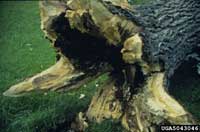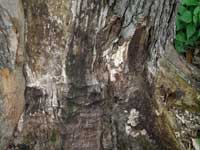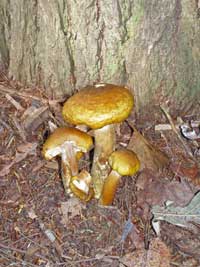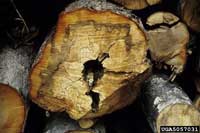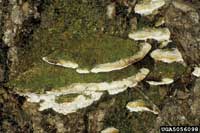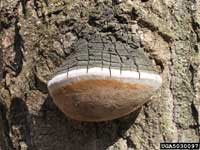Extension > Garden > Diagnose a problem > What's wrong with my plant? > Deciduous > Ironwood (Ostrya) > Tree breaks or falls over
Ironwood (Ostrya) > Whole tree > Tree breaks or falls over
1 of 2
Armillaria root rot
Armillaria spp.
- Infected trees have poor growth, dead branches in the upper canopy, undersized and/or yellow leaves
- Flat white sheets of fungal growth (mycelial fans) between the bark and sapwood at the base of infected trees
- Thick black, shoestring-like fungus can sometimes be seen under the bark, around roots and in the soil around the base of the tree
- Wood is decayed, white, soft and spongy; this may extend from the base of the tree well up into the trunk
- Trees frequently break or fall over in storms
- Clusters of honey-colored mushrooms may grow at the base of the tree in fall
- More information on Armillaria root rot
2 of 2
Heart rot
Phellinus spp. and Oxyporus populinus
- Fungal fruiting bodies arise along the stem, near a pruning wound, crack or other wound
- Phellinus fungi grow are up to 8" across, hoof-shaped and dark gray above, tan below with a white margin
- Oxyporus shelf fungi are 6" across, almost as thick and often covered with green moss
- The canopy may show no symptoms or may have small yellowing leaves or dead branches depending on the extent of the trunk decay
- In cross section of the trunk, the wood at the center is discolored, soft, crumbling, stringy or spongy
- More information on Heart rot



